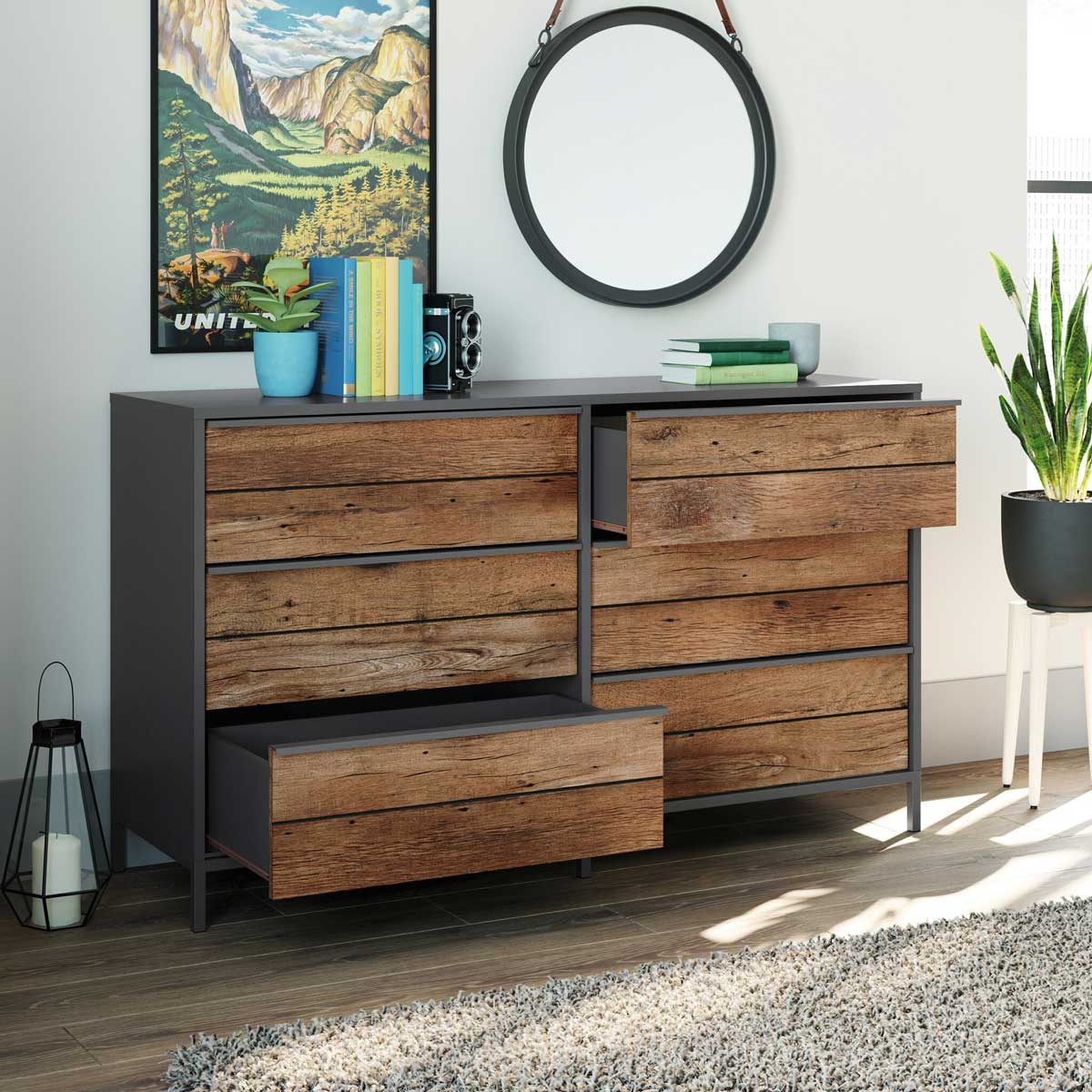If you're in the market for new bedroom furniture, here's what you should know about bedroom dressers.

What to Know About Bedroom Dressers

Did you know that dressers, a standard component of most bedroom sets, were first used in the kitchen? In 16th century England, dressers were wooden sideboards with drawers, typically used for preparing or “dressing” meats to be served at the dining table. As dressers became common in America, some were placed in the bedroom to store clothes.
Here’s what you need to know before buying a bedroom dresser.
On This Page
What Is a Dresser?
A dresser, a.k.a. a vanity or a dressing table, is a low, wide piece of furniture with drawers for storing clothing. A dresser may have two to four large drawers running its entire width, two or three rows of smaller drawers, or smaller drawers on top and bigger drawers at the bottom.
The flat dresser top lends itself to holding pretty, often-used personal items such as jewelry, perfume and accessories, as well as framed photos or other keepsakes. A dresser often features an attached mirror which helps with getting dressed, giving its name a more modern interpretation.
Don’t confuse a dresser with a chest, or chest of drawers. Also called a bureau, this tall — typically chest-height — and narrow piece of furniture features drawers, but no mirror. An antiques dealer may refer to an old one as a chiffonier.
And then there’s the chifferobe, a cross between a wardrobe or armoire and a chest of drawers. One half of this tall furnishing contains drawers, while the other has space for hanging clothes.
What Are Dressers Good For?
With their wide drawers (typically 16 to 22 inches), dressers are made for storing folded clothing. This might include jeans and sweatpants, t-shirts and sweatshirts, pajamas and any other clothing that doesn’t wrinkle easily.
Because some dressers have smaller drawers on top and larger ones at the bottom, many people opt to keep smaller items like underwear and socks in the top drawers, and larger or bulkier clothing in the bottom drawers. With the popularity of Marie Kondo’s tips for organizing and decluttering, more people keep their dressers neat and orderly, with clothes folded and stacked with military precision.
Dresser Styles and Materials
The earliest dressers were made of wood. Whether they were plain and functional or decorative and elaborate depended largely on the economic status of the owner. Today, the emphasis is still on storage space and functionality, but the style of dressers runs from traditional Colonial-style to sleek and modern.
Wood is still a primary material. But instead of just being stained and sealed, it may be painted in colors to match the decor of the room.
In the 1950s and ’60s, furniture made from particleboard — including bedroom dressers — appeared on the market. Today, laminated particleboard is a common material for dressers and other bedroom furnishings. It’s popular because it’s inexpensive, easily assembled by the consumer, and comes in various colors and finishes.
What Size Dresser Should You Get?
If you already know where your new bedroom dresser will go, then the size of that space determines how big a dresser you should get. Consider dresser depth and whether it will interfere with the bedroom’s traffic flow. If you’re not limited by space, consider how much stuff, clothing or otherwise, needs to fit into the dresser. Add extra room for wardrobe growth, if possible.
Bedroom Dresser Alternatives
If style or space prohibits a big bedroom dresser, try an alternative to bedroom dressers:
- A closet organizer: Even a small closet can do double-duty as a dresser with the right shelves and other components. You can also buy readymade closet organizer systems, or even convert a closet into a DIY dresser and wardrobe.
- A storage bed: Create storage space in a small room by buying or building a bed with storage drawers or bins underneath.
- Over-bed storage: Make the most of your bedroom wall space by swapping out a dresser and installing a shelf unit above the bed.




















